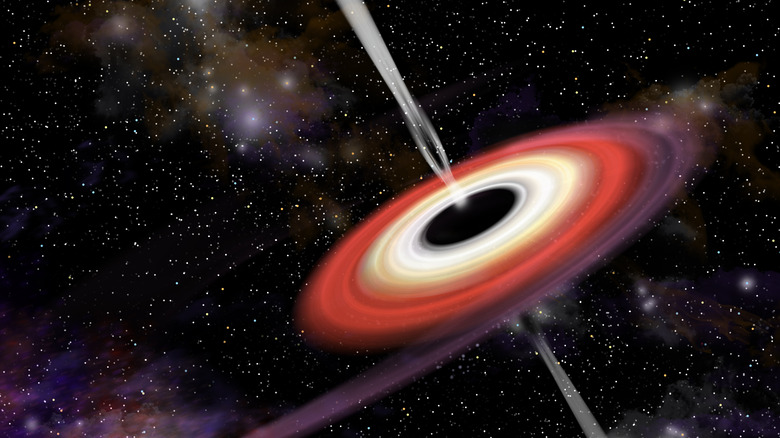Scientists May Have Uncovered A New Way Of Annihilating Massive Stars
Stars can live outrageously long lives. Our sun (which made news by smiling in 2022) is currently around 4.5 billion years old, meaning that there's around five billion more years left to it in its absurd lifespan. Later in its life, Jillian Scudder reports, it will have expended all of its hydrogen, and the remaining helium plus the impact of gravity will make it unstable, expand, and turn it into a red giant. This will mark the end of life on Earth, and of the Earth itself, as it's engulfed. The natural life cycle of a star is dramatic enough, but other things can destroy stars in terrifying, spectacular fashion, it seems. Gamma-ray bursts are one such phenomenal force.
Marvel fans will surely be familiar with the concept of gamma rays, but in reality, they certainly won't give anyone any superpowers. A gamma-ray burst, regarded by NASA Astrobiology to be "the brightest electromagnetic blasts known to occur in the Universe," can result from the demise of stars, the sheer power they emit as a black hole forms during its end. Being in the path of such a burst, as you may have guessed, is less than desirable. Its influence would be capable of stripping the ozone layer from the planet.
Here's the lowdown on a very special gamma-ray burst, and how it may be responsible for changing the way we look at the destruction of enormous stars.
What was special about this gamma-ray burst?
In June 2023, astronomers discovered something intriguing about gamma ray bursts' creation, something that may suggest there's a way of destroying stars we didn't know about before.
NOIRLab's International Gemini Observatory reports that a gamma-ray burst it had been studying originated in very unique circumstances: A supermassive black hole. That's a black hole of tremendous size and extraordinary gravitational influence. This one from another galaxy created a busy environment marked by a "collision of stars or stellar remnants." It's believed that all of these chaotic collisions gave rise to a gamma-ray burst. Not a super-short-lived one, either.
This gamma ray burst, designated GRB 191019A according to Northwestern University, isn't believed to have originated in any of the previously-understood ways (the slow and natural demise of a huge star for instance). Such collisions, then, appear to be another way of annihilating stars. It's a new discovery with intriguing implications. This, as Radboud University astronomer Andrew Levan puts it, "is exciting for understanding how stars die and for answering other questions, such as what unexpected sources might create gravitational waves that we could detect on Earth."

